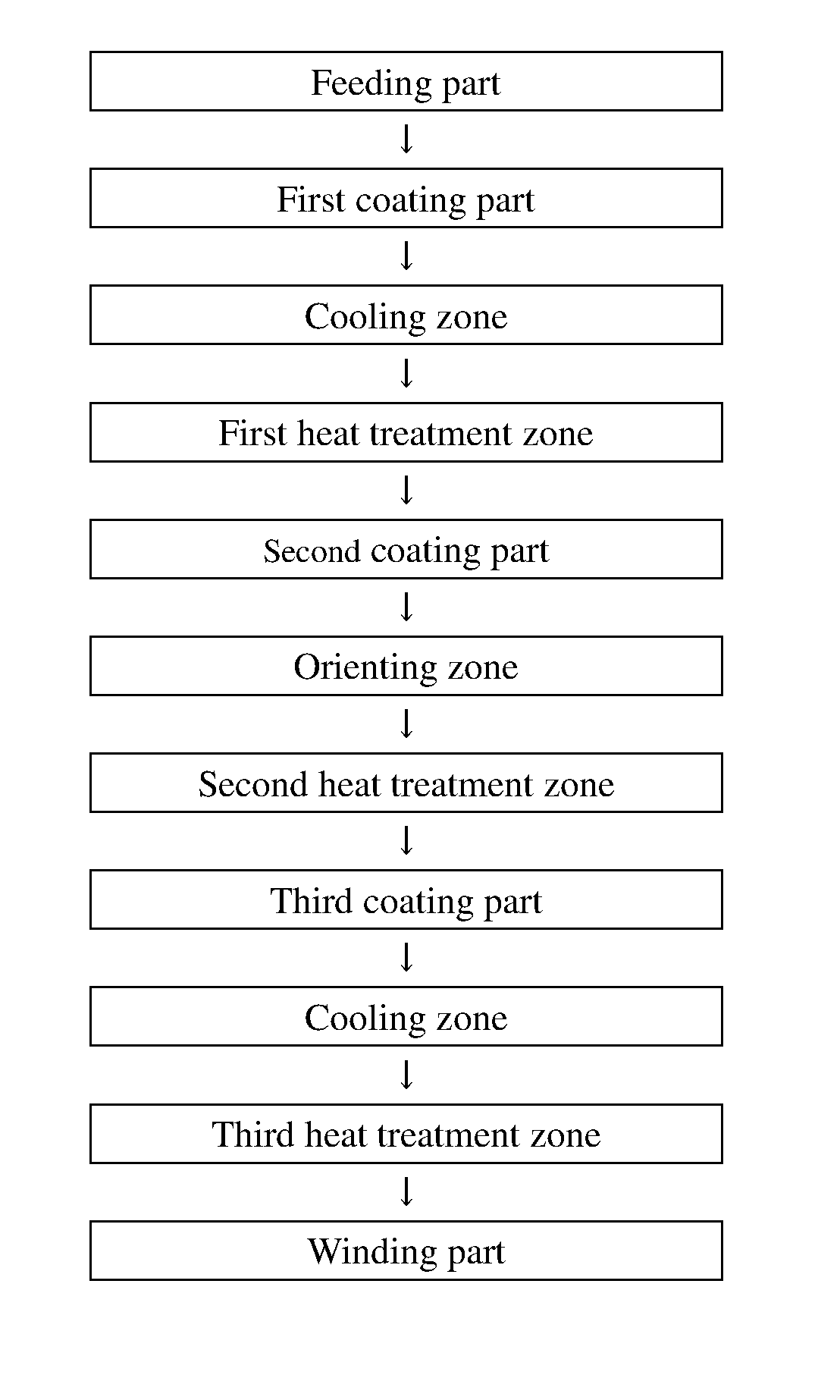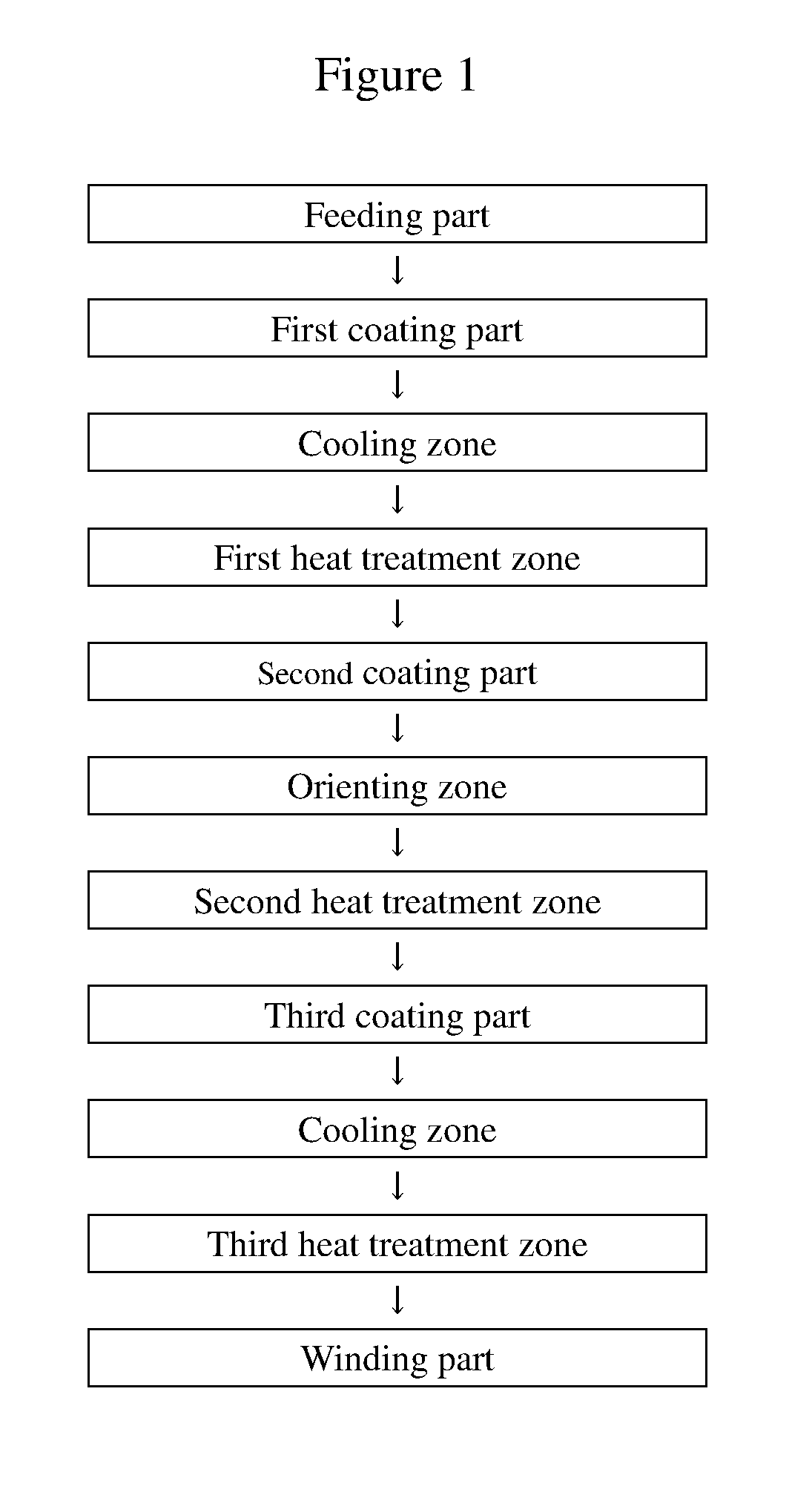Magnetic tape and method of manufacturing the same
a technology of magnetic tape and manufacturing method, which is applied in the field of magnetic tape, can solve the problems of increasing the error rate of recording, affecting the recording quality of the recording, so as to increase the overall length of the magnetic tape, increase the recording capacity of the magnetic tape cartridge, and reduce the thickness of the magnetic tape
- Summary
- Abstract
- Description
- Claims
- Application Information
AI Technical Summary
Benefits of technology
Problems solved by technology
Method used
Image
Examples
examples
[0155]The present invention will be described in greater detail below through Examples. However, the present invention is not limited to the embodiments shown in Examples. The “parts” and “percent (%)” indicated below denote “weight parts” and “weight percent (%)”.
[0156]The weight average molecular weights given below are values obtained by measurement by gel permeation chromatography (GPC) under the following conditions with polystyrene conversion.
[0157]GPS device: HLC-8120 (made by Tosoh)
[0158]Column: TSK gel Multipore HXL-M (made by Tosoh, 7.8 mm ID (inner diameter)×30.0 cm)
[0159]Eluent: Tetrahydrofuran (THF)
examples 1 to 17
, Comparative Examples 1 to 13
[0160]1. Preparation of Alumina (Abrasive) Dispersion
[0161]To 100.0 parts of alumina powder (HIT-80 made by Sumitomo Chemical Co.) with an alpha conversion rate of about 65% and a BET specific surface area of 20 m2 / g were admixed 3.0 parts of 2,3-dihydroxynaphthalene (made by Tokyo Kasei), 31.3 parts of a 32% solution (in a solvent in the form of a mixed solvent of methyl ethyl ketone and toluene) of polyester polyurethane resin (UR-4800 made by Toyobo (Japanese registered trademark) with polar groups in the form of SO3Na groups (polar group quantity: 80 meq / kg)), and 570.0 parts of a solvent in the form of a mixed solution of 1:1 (weight ratio) methyl ethyl ketone and cyclohexanone. The mixture was dispersed for 5 hours in a paint shaker in the presence of zirconia beads. Following dispersion, the dispersion and the beads were separated with a mesh, yielding an alumina dispersion.
[0162]2. Formula of Magnetic Layer Forming Composition
(Magnetic liquid)Fe...
PUM
| Property | Measurement | Unit |
|---|---|---|
| thickness | aaaaa | aaaaa |
| thickness | aaaaa | aaaaa |
| thickness | aaaaa | aaaaa |
Abstract
Description
Claims
Application Information
 Login to View More
Login to View More - R&D
- Intellectual Property
- Life Sciences
- Materials
- Tech Scout
- Unparalleled Data Quality
- Higher Quality Content
- 60% Fewer Hallucinations
Browse by: Latest US Patents, China's latest patents, Technical Efficacy Thesaurus, Application Domain, Technology Topic, Popular Technical Reports.
© 2025 PatSnap. All rights reserved.Legal|Privacy policy|Modern Slavery Act Transparency Statement|Sitemap|About US| Contact US: help@patsnap.com



